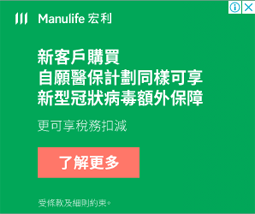Secondary Packaging Trends: Balancing Functionality and Sustainability
Introduction: The Importance of Balancing Functionality and Sustainability in Secondary Packaging Is your business keeping pace with the growing demand for expr...

Introduction: The Importance of Balancing Functionality and Sustainability in Secondary Packaging
Is your business keeping pace with the growing demand for express delivery services? In our fast-paced world, the need for efficient and reliable secondary packaging solutions is more critical than ever. As e-commerce flourishes, so does the need to balance functionality with sustainability. This article delves into the trend of achieving this balance in secondary packaging designs, ensuring that your products reach customers quickly and responsibly.
Minimalist Packaging Designs: A Shift Towards Simplicity
What is the appeal of minimalist designs in secondary packaging? These designs focus on the essentials, stripping away unnecessary elements and reducing material usage. By streamlining packaging, companies can meet the goals of express delivery while minimizing their environmental footprint. Minimalist packaging is not just aesthetically pleasing; it's also more eco-friendly, making it a popular choice among consumers and businesses alike.
Integration of Sustainable Materials: Enhancing Functionality with Eco-Friendly Options
How can businesses enhance the functionality of their packaging while also being eco-friendly? The integration of sustainable materials is key. From recycled cardboard to biodegradable plastics, companies are exploring a wide range of options to reduce their carbon footprint. By using sustainable materials, businesses can improve the functionality of their packaging and appeal to environmentally conscious consumers, enhancing their brand image.
The Role of Consumer Demand: Driving Eco-Friendly Packaging Trends
What role does consumer demand play in shaping the future of secondary packaging? It's crucial. As more individuals prioritize sustainability in their purchasing decisions, companies are under pressure to adopt eco-friendly practices. Express delivery services must align with consumer values, leading to a shift towards more environmentally responsible packaging solutions. By listening to customer feedback and adapting to changing preferences, businesses can stay ahead of the curve and maintain a competitive edge in the market.
Case Studies: Successful Balancing of Functionality and Sustainability
Which brands have successfully navigated the balance between functionality and sustainability in their secondary packaging? Companies like Amazon have implemented innovative packaging designs that prioritize efficiency without compromising on eco-friendliness. By investing in research and development, these brands have managed to create packaging solutions that meet the needs of express delivery while also aligning with sustainability goals. These case studies serve as inspiration for other businesses looking to enhance their packaging strategies.
Looking Ahead: The Future of Secondary Packaging
What does the future hold for secondary packaging? The future lies in finding the perfect balance between functionality and sustainability. As express delivery services continue to evolve, so too must packaging solutions. By embracing minimalist designs, integrating sustainable materials, and responding to consumer demand, businesses can create packaging that not only protects products during transit but also upholds environmental responsibility. The key to success lies in understanding the dual focus on functionality and sustainability and finding innovative ways to merge the two seamlessly. With a concerted effort towards eco-friendly practices, the future of secondary packaging looks promising and bright. For more on the latest in secondary packaging and express delivery, stay informed with GLB SharkBox.













.jpg?x-oss-process=image/resize,p_100/format,webp)





